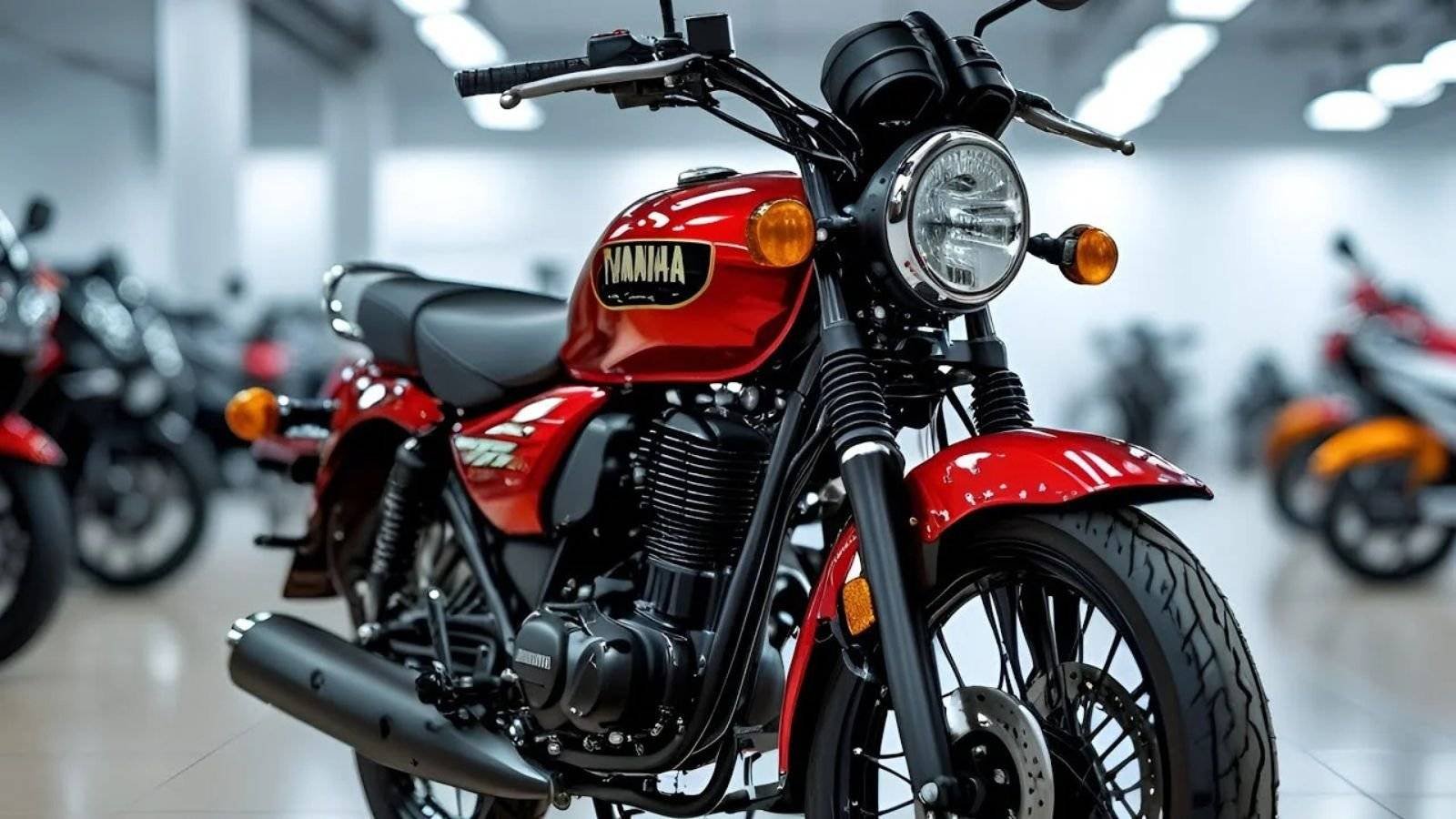Ask any seasoned biker about the motorcycles that shaped India’s two-wheeler legacy, and chances are the Yamaha RX100 will top their list. More than just a mode of transport, the RX100 was a revolution on two wheels. It wasn’t about fancy digital meters, LED lights, or electronic riding modes. It was about sheer, unfiltered motorcycling pleasure. For a whole generation of riders in the 80s and 90s, the Yamaha RX100 was more than a bike—it was a rite of passage.
From the unmistakable engine roar to the lightweight design and aggressive acceleration, the RX100 carved a permanent space in the hearts of Indian motorcyclists. Let’s journey back and discover what made this bike such a cherished legend.
Yamaha RX100 – Key Highlights
| Feature | Details |
|---|---|
| Engine | 98cc, air-cooled, 2-stroke |
| Power | Approx. 11 HP |
| Gearbox | 4-speed manual |
| Weight | Around 100 kg |
| Top Speed | Approx. 100 km/h |
| Brakes | Front and rear drum brakes |
| Fuel Efficiency | 25–30 km/l (depends on tuning and usage) |
| Suspension | Telescopic front forks, swingarm rear |
| Production Years | 1985 to 1996 (Discontinued) |
| Legacy | Cult status for raw performance & sound |
Yamaha RX100: What Made It So Special?
The Yamaha RX100 wasn’t just popular because it was fast—it was the way it delivered that speed. The 98cc two-stroke engine might sound modest by today’s standards, but back in the day, it was a monster in its class. Crisp throttle response, instant torque delivery, and a high-revving engine made the RX100 a dream for thrill-seekers.
What really captured hearts was the sound. That sharp, raspy “ting-ting-ting” exhaust note wasn’t just noise—it was a siren call for every bike lover within earshot. No other bike in its segment came close to matching its aural presence.
Its appeal went beyond performance. The Yamaha RX100 had a clean, simple design that reflected its raw, unfiltered personality. The round headlight, classic lines, and no-frills bodywork gave it a timeless appearance that still looks charming even today.
The Performance That Set It Apart
When the Yamaha RX100 entered the Indian market in the mid-80s, it didn’t just compete—it dominated. While other motorcycles struggled to offer a balance between mileage and power, the RX100 threw that equation out the window and focused on delivering raw acceleration.
Thanks to its low weight (just about 100 kg), the power-to-weight ratio was excellent. Riders often reported the bike hitting 0–60 km/h in under 7 seconds, an impressive figure for a 100cc machine at the time. This made it a favorite for drag racing and street competitions.
The 4-speed manual transmission was slick and engaging. You didn’t need to be a professional to enjoy the thrill of its gear shifts—every transition felt crisp, with no lag or clunky feedback.
Handling and Suspension: Light, Nimble, and Fun
The Yamaha RX100 was engineered to be simple yet effective. It came equipped with telescopic front forks and twin shock absorbers at the rear. While not high-tech by today’s standards, the suspension was well-tuned for Indian road conditions. It handled potholes and bumps reasonably well, and the light weight gave it an edge in maneuverability.
Whether weaving through traffic or cruising on open roads, the bike felt balanced and responsive. Young riders, especially college students and early professionals, loved how nimble it was. It gave them the sensation of riding something far more powerful than it actually was.
Even now, people who own a restored Yamaha RX100 talk about its light handling and that precise, almost telepathic connection between the throttle and rear wheel.
Why the Yamaha RX100 Still Lives On
Though it was discontinued in 1996, the legacy of the Yamaha RX100 is far from over. Enthusiasts and collectors across India continue to hunt for old models, spending months or even years restoring them to original condition.
Why such passion for a decades-old bike? Because the RX100 symbolizes freedom, rebellion, and the golden era of Indian motorcycling. It represents a time when riding was pure and unfiltered—free from gadgets and electronic wizardry.
In fact, many restoration garages across India specialize in rebuilding Yamaha RX100 bikes. From sourcing rare OEM parts to recreating the original paint scheme and decals, there’s a thriving underground scene keeping the RX100 alive.
Racing Roots and Modding Culture
The Yamaha RX100 was a tuner’s paradise. With its simple mechanics and mod-friendly engine, it quickly became a favorite in the racing scene. Enthusiasts would port the cylinder, install expansion chambers, and fine-tune carburetors to extract even more performance.
These modifications could easily push the top speed past 120 km/h—unthinkable for most 100cc bikes. In fact, in local drag races and rally events during the 90s and early 2000s, it wasn’t unusual to see heavily modified RX100s outpacing newer and larger motorcycles.
This rich modding culture also contributed to the bike’s cult status. It wasn’t just a machine—it was a blank canvas for personal expression and mechanical creativity.
Can You Still Ride an RX100 Today?
Yes, you can—but it comes with some challenges. Since it’s been out of production for decades, finding a Yamaha RX100 in good running condition can be difficult. Prices vary widely based on how well the bike has been maintained or restored.
A well-preserved original RX100 can fetch anywhere from ₹70,000 to ₹1.5 lakh. Rare color variants or those with all-original parts can command even higher prices.
Parts availability is another concern. While some parts are still manufactured or reproduced by aftermarket vendors, others need to be sourced from scrapped models or imported. Still, for die-hard fans, the effort is worth every rupee.
If you’re considering using the RX100 as a daily commuter, be prepared for slightly higher fuel costs and more frequent maintenance compared to modern bikes. But if you’re riding for the joy of it, there’s nothing quite like the Yamaha RX100.
FAQs About the Yamaha RX100
Why was the Yamaha RX100 discontinued?
The RX100 was pulled from production due to stricter emission norms. As a two-stroke engine, it couldn’t meet the cleaner BS1/BS2 emission standards being introduced in the late 90s.
Is the Yamaha RX100 still road legal?
Yes, provided the bike is properly registered, insured, and passes PUC (pollution under control) checks in your state.
What is the real-world mileage of the Yamaha RX100?
It typically delivers between 25–30 km/l, though this can vary based on riding habits and modifications.
Is it a good investment today?
Absolutely—for collectors, vintage bike lovers, and passionate riders. Its resale value remains strong and even increasing due to its rarity.
Can Yamaha relaunch the RX100?
There are constant rumors, and Yamaha has expressed interest in reviving the RX brand. However, bringing back a true two-stroke RX100 in today’s regulatory environment is nearly impossible. A four-stroke version could come, but it may not carry the same soul.
Conclusion: The Yamaha RX100 is Not Just a Bike—It’s a Legacy
In a world obsessed with newer, faster, and more advanced motorcycles, the Yamaha RX100 reminds us of a simpler time—when raw power, simplicity, and passion were all that mattered. It wasn’t built to impress with gadgets; it was built to thrill with every twist of the throttle.
Even decades after its discontinuation, the RX100 continues to live on—restored in garages, raced on tracks, and remembered in conversations. It’s not just nostalgia; it’s a genuine admiration for a machine that gave riders their first true taste of speed and freedom.
If you’ve ever owned a Yamaha RX100, you know what we mean. And if you haven’t yet experienced it, riding one might just change how you see motorcycles forever.
Would you bring the RX100 back if you could? Drop your thoughts below and share your RX stories with us.
Some Important Link
| Telegram Group | Click Here |
| WhatsApp Group | Click Here |
| Home Page | Click Here |















